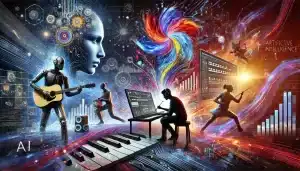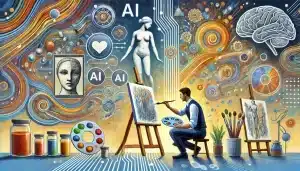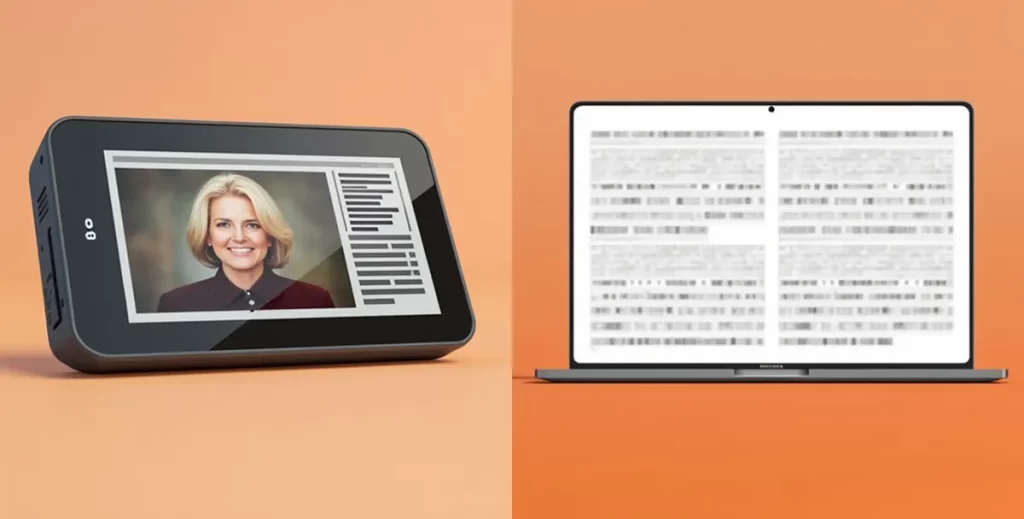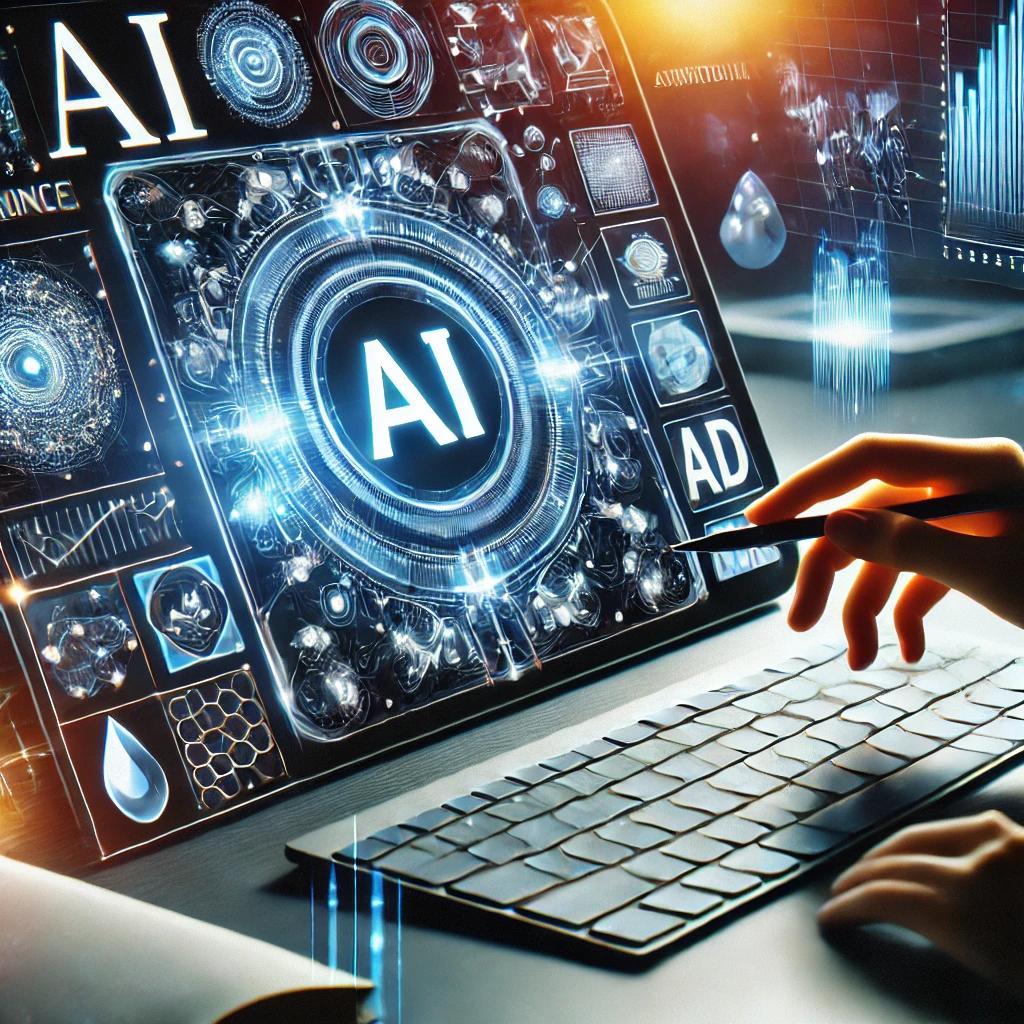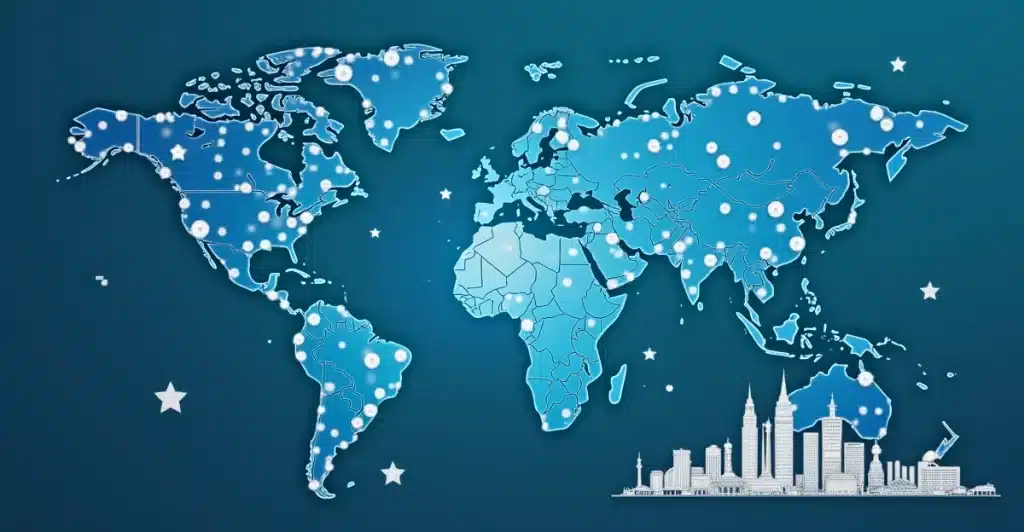The integration of artificial intelligence (AI) into various aspects of society has opened up new horizons and fundamentally reshaped numerous sectors, including the creative industries. AI technology has not only streamlined traditional creative processes but also introduced innovative techniques and tools that were previously unimaginable. From generative art and music composition to graphic design, AI’s impact on the creative industry is profound and far-reaching. This article explores the transformative power of AI in creative work, the ensuing ethical considerations, future trends, and the challenge of replicating human creativity.
How is AI Transforming Creative Industries?
What is the Role of Generative AI in Creative Work?
Generative AI has emerged as a groundbreaking tool in the creative industries by automating the creation of complex and aesthetically pleasing outputs. These AI models use advanced algorithms to generate new content based on input data, learning from existing creative works to produce remarkable and often surprising results. For instance, AI-generated art employs sophisticated machine learning techniques to create paintings, sculptures, and even digital media that emulate human artistic styles. Such innovations are reshaping the boundaries of what is possible in creative work, enabling artists and creators to push their limits and explore uncharted terrains in art and design.
How AI Systems Enhance Music Composition?
Music composition is another domain where AI systems have made significant strides. AI algorithms analyze vast databases of musical compositions, learning patterns and structures which they then use to create new pieces of music. Tools such as OpenAI’s MuseNet and Google’s Magenta have brought avant-garde capabilities to composers, allowing them to generate harmonies, melodies, and rhythms through the power of AI. These advancements not only aid musicians in their creative process but also open the door to entirely new genres and auditory experiences. AI in music composition stands as a testament to how technology can enhance human creativity and broaden creative potential.
In What Ways Does AI Aid Graphic Design?
AI is revolutionizing graphic design by simplifying tasks and offering innovative solutions. AI tools such as Adobe’s Sensei harness machine learning to automate routine functions like image editing, color correction, and layout adjustments, thereby allowing designers to focus on more creative aspects of their projects. Additionally, generative AI can suggest design elements, and even create entirely new designs based on user inputs. This synergy between AI and human designers leads to faster production times, more dynamic creations, and a greater capacity for experimentation in the creative industries.
What Ethical Considerations Arise with AI in Creative Industries?
How Can We Ensure Responsible Use of AI?
As AI becomes increasingly intertwined with creative processes, ensuring its responsible use is paramount. Responsible AI usage involves addressing biases in AI algorithms, safeguarding intellectual property, and establishing clear guidelines for AI-generated content. Developers and stakeholders in creative industries must work collaboratively to ensure AI systems are transparent and accountable. Moreover, ethical considerations should be integrated into AI development from the ground up to prevent misuse and protect the integrity of creative work.
What Are the Concerns with AI-Generated Content?
AI-generated content raises several concerns, particularly around authorship and ownership. Questions arise as to who holds the intellectual property rights of AI-generated art— the AI developers, the users who provide input, or the machine itself? Additionally, there are fears that the rise of AI-generated content could lead to homogenization in creative industries, where human uniqueness and individual artistry could be overshadowed by algorithmically produced works. Addressing these concerns is critical for the healthy integration of AI in the creative industry.
How Does AI Impact Human Creativity?
The entanglement of AI and human creativity is both enriching and controversial. On one hand, AI tools can augment human creativity by providing new means and methods for artistic expression. On the other hand, there is a fear that overreliance on AI could stifle original thought and creativity. However, rather than viewing AI as a replacement for human creativity, it should be seen as a complementary force that offers new perspectives and inspires innovation. Ai and human collaboration can lead to unprecedented creative heights if approached thoughtfully.
What Are the Future Trends for AI in Creative Work?
What New AI Tools Are Emerging for Art Creation?
As AI technology continues to advance, new AI tools are emerging that redefine the landscape of art creation. Tools like DALL-E and DeepArt.io are pushing the limits of what is achievable, turning text descriptions into vivid images and transforming photographs into stylized artwork. These advancements allow artists to experiment with new forms and techniques, fostering a more diverse and dynamic creative ecosystem. As we progress deeper into the AI era, the potential of AI in the creative industry continues to expand, unveiling groundbreaking opportunities for innovation.
How Will AI Change the Creative Process?
The creative process is undergoing a profound transformation with the integration of AI. Traditionally, creative work involved substantial manual labor and iterative development. However, AI streamlines many of these processes by offering instant feedback, automated adjustments, and new forms of collaboration. Creators can now focus more on conceptualization and experimentation, knowing that AI tools will handle mundane tasks. This shift not only increases efficiency but also enhances the quality and depth of creative outputs, ensuring a vibrant and ever-evolving creative landscape.
What Innovations in Generative AI Are Expected?
Future innovations in generative AI are expected to deliver even more sophisticated and versatile tools for creative industries. Advances in neural networks and machine learning algorithms will enable AI to generate more complex and nuanced content, with AI models becoming increasingly adept at mimicking human styles of creation. This includes more intuitive interfaces that can better understand and anticipate user needs, improved context awareness, and greater interactivity. Such innovations promise to revolutionize creative work, allowing for new levels of detail, customization, and originality.
Can AI-Generated Images Truly Replicate Human Creativity?
What Are the Differences Between AI-Generated and Human-Made Art?
While AI-generated images can be astonishingly realistic and inventive, there are fundamental differences between AI-generated and human-made art. Human art is often imbued with emotional depth, personal experiences, and cultural context that AI, no matter how advanced, struggles to replicate. AI-generated content, although impressive, might lack the nuanced storytelling and intentionality associated with human creativity. Thus, while AI can produce visually striking pieces, the unique essence of human artistry remains distinct and irreplaceable.
How Do Algorithms Create Image Content?
AI algorithms create image content through processes such as deep learning and neural networks. These algorithms are trained on massive datasets of existing images and are capable of learning intricate patterns, color schemes, and stylistic elements. By processing and synthesizing this information, AI systems can generate new images that mimic the input data’s characteristics. Tools like ChatGPT and OpenAI’s DALL-E exemplify how algorithms, through layers of processing and refinement, can produce high-quality, AI-generated images that dazzle and inspire.
Are There Limitations to See AI in Art Creation?
Despite the remarkable capabilities of AI in art creation, there are inherent limitations. AI is still far from capturing the full spectrum of human emotions, cultural significance, and spontaneous inspiration that define much of human art. Moreover, AI-generated work often follows patterns and relies on existing data, which can lead to constraints in originality and innovation. The challenge lies in harmonizing AI’s computational power with the boundless creativity and unpredictability of human artistry, acknowledging that AI remains a tool rather than a replacement.
What is the Overall Impact of AI on Creative Industries?
How Does AI Affect Traditional Creative Roles?
The advent of AI has considerably reshaped traditional creative roles. Tasks once requiring considerable time and effort, such as editing, prototyping, and iterative design, can now be efficiently managed by AI systems. This transformation allows creative professionals to redirect their focus towards more strategic and innovative endeavors, thereby expanding their roles from executors of tasks to conceptual visionaries. While there is concern that AI could displace certain creative jobs, it simultaneously creates new opportunities that blend technology and artistry, driving the industry forward.
What Benefits Do Creative Industries Gain from AI?
Creative industries gain numerous benefits through the integration of AI. Increased efficiency and productivity are notable advantages, as AI can automate routine tasks, allowing creators to focus on higher-level creative pursuits. AI tools also provide unprecedented access to a wealth of data and insights, empowering creators to make more informed decisions and produce works that resonate with their audience. Furthermore, AI’s ability to inspire and generate new forms of art can lead to a richer, more diverse creative culture that continuously evolves and innovates.
What Are the Challenges in Integrating AI in Creative Practices?
Despite the potential benefits, integrating AI into creative practices comes with its own set of challenges. One major concern is the risk of overreliance on AI systems, which may stifle individual creativity and originality. Additionally, navigating the ethical implications, such as ensuring fairness, protecting intellectual property, and maintaining authenticity in AI-generated content, requires careful consideration and regulatory oversight. Lastly, adapting to and mastering new AI tools demands time and resources, necessitating ongoing education and training for creative professionals to stay current in this rapidly evolving landscape.

